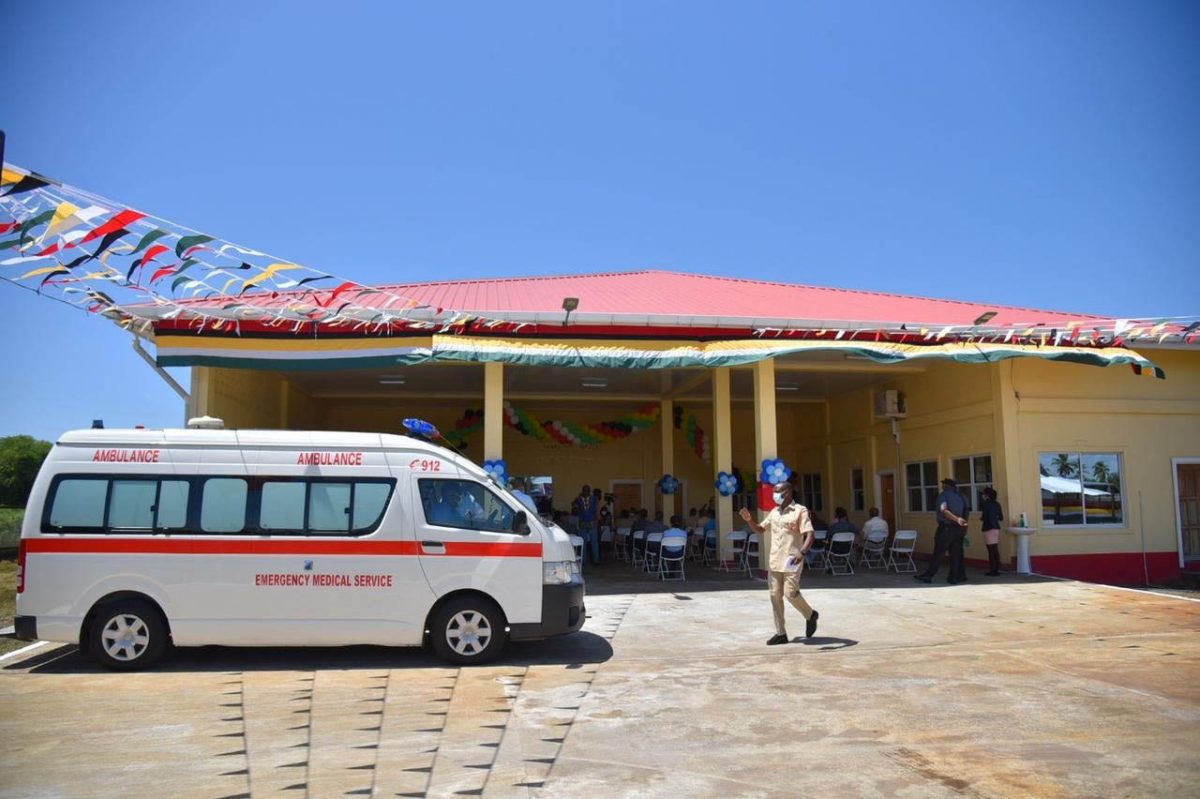The government yesterday launched the extension of the country’s Emergency Medical Service (EMS) at Melanie, East Coast Demerara (ECD), where a $51 million fire station was also commissioned.
The newly constructed fire station, which is situated along the Melanie Public Road, is expected to boost the operations of the Guyana Fire Service (GFS) by responding to fires mainly in the East Coast district.
Delivering remarks at a simple ribbon cutting ceremony yesterday afternoon, Director of the EMS Dr Zulfikar Bux described the launch of the extension of the EMS as a historic moment for the country.
“In the history of Guyana, this is the first time we will actually be having EMS coverage outside of the city,” Dr Bux explained.
According to Dr Bux, the importance of the EMS is often “downplayed” as he noted that it involves complex organisation and planning to ensure paramedics or emergency medical technicians [EMTs] are available on the frontend to respond to public emergencies.
“The EMS is not what most people think at this stage….It’s not just an ambulance with attendants,” he said. “…It’s not ambulance with attendants. Those days are gone. We are the modern Guyana,” he added, while noting that Guyana is moving faster than most countries in the developing world to have access to nationwide EMS access. .
According to him, since 2016, the EMS has responded to 18,310 calls, delivered 27 babies before they arrived at the hospital and carried out 4 resuscitations.
In addition, Dr Bux said more than one thousand workers were trained by EMS to be first responders, including closed to 100 EMTs, 32 medical dispatchers, over 700 police officers, 115 firefighters.
He pledged continued effort to ensure that there is nationwide EMS access to respond to public emergencies.
“So 2021 will be a historic year for the EMS… Our hope is, within the next three to five years, is to have a national system that covers response for medical emergencies in the public domain,” Dr Bux said.
By the end of this year, he said two more ambulances are expected to arrive and plans are in the pipeline to have the service replicated in regions Three and Five.
Also speaking at the event was Minister of Health Dr Frank Anthony, who shared plans to expand the EMS system “more rapidly”.
“We know that with a good EMS service that there are many lives that could be saved but think about the opportunity that is lost if we take a lot of time in expanding this service…that is why we want to ensure that we don’t lose many more opportunities in terms of saving lives,” he said. Among the plans mentioned by Anthony were the acquisition of 20 new ambulances and the refurbishment of an EMS headquarters at the Ocean View Hospital building.
“…That is how serious we are about this whole EMS… We want to have a head office, we want to have technicians trained, we want to have the ambulance infrastructure, we want to have a communication network….We are working towards that,” Anthony stated.
Apart from the coastland areas, Anthony said he also desires to have the service in some of the interior locations.
In terms of the mountainous areas in the country, Anthony further stated, the ministry is purchasing ATVs with carriages that will function as ambulances. “…So we believe that if we are going to lift the services that we have, especially the emergency services, we have to think in a holistic way and look at a very comprehensive service,” he said.
As the service is being improved, Anthony noted that it is also important that there are timely responses to arising emergencies and he noted that resultantly strategically stationing ambulances at different points becomes “very important”.
Minister of Home Affairs Robeson Benn said that with the new development, the country is now on the pathway of having rapid response to medical emergencies throughout the country.
Benn explained that as more new fire stations are being commissioned, the national architecture in response to fire and medical emergencies would be “comprehensively” enhanced.
Equally significant, he said is the training for firefighters and EMTs. “….Our training might be modest sometimes but I think we are fully well aware of what we need to do, how we ought to do it and the schedule and timelines within which those things should be done for it to be effective,” he urged.






